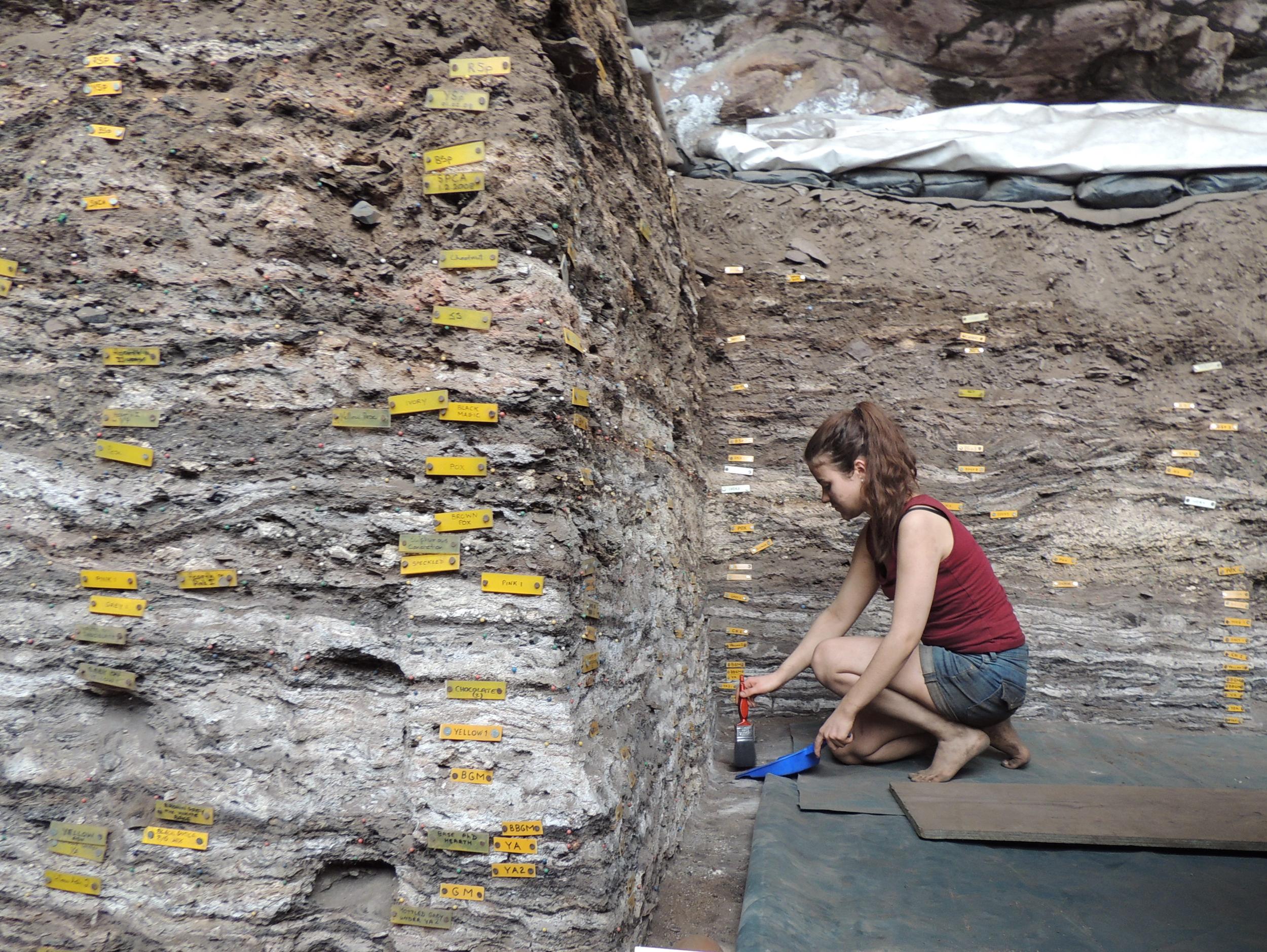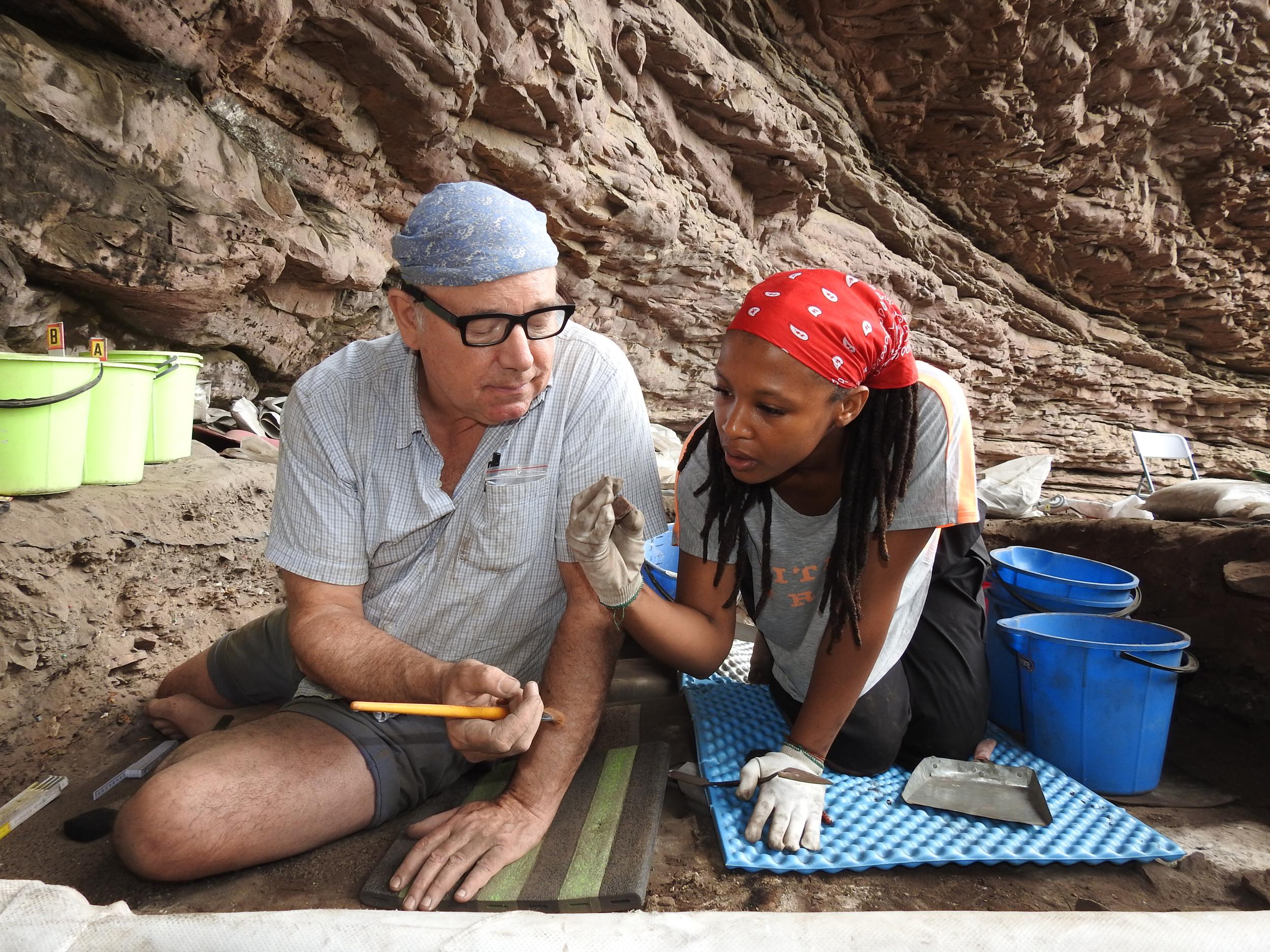Key archaelogical site researched by the University of Tübingen for over a decade declared "World Heritage Site" by UNESCO

© M. Zeidi, University of Tübingen
Sibhudu is like an archive for the early cultural development of our ancestors, before Homo sapiens successfully colonised Eurasia and displaced Neanderthals and other archaic human species. The rock shelter covers archaeological layers dating from around 100,000 to 35,000 years ago and served as a dwelling place for humans during this period.
I am delighted that UNESCO is paying more attention to Stone Age sites and sites of human evolution. The decision draws the public's attention to the origins of human civilisation and human development. There are still far too few World Heritage sites from this period", said excavation director Nicholas Conard, professor at the University of Tübingen and the driving force behind the Triple Master’s Degree in Palaeolithic Archaeology.
At Sibhudu, the archaeologists found the oldest evidence of the construction of plant mats as sleeping and workplaces as well as evidence of the use of bone tools and of early symbolic behaviour in the form of shell beads. In addition, one of the oldest arrowheads made of bone was found at the site – one of the earliest proofs of the invention of this technology.

© S. Hamzavi-Zarghani, University of Tübingen
All these findings provide unusually deep insights into the lives of our ancestors: they were capable of abstract and complex thought, made a wide variety of tools from stone and bone, mastered the use of fire, hunted animals and also used plant resources for their purposes.
In the heart of Sibhudu
Sibhudu is located on the east coast of South Africa in the province of KwaZulu-Natal, around 40 kilometres north of Durban and 15 kilometres inland from the Indian Ocean. The rock shelter is located on a sandstone cliff above the Uthongathi River and spans an area of around 55 by 12 metres.
Systematic research into the site began in 1998 with excavations led by Lyn Wadley from the University of Witwatersrand in Johannesburg. In 2011, the South African researcher handed over the site to Prof. Nicholas Conard, from the Senckenberg Centre for Human Evolution and Palaeoenvironment at the University of Tübingen.

© S. Hamzavi-Zarghani, University of Tübingen
Since then, annual excavations have been carried out there by the University using state-of-the-art methods. Collaboration with various international experts, such as archaeozoologists, archaeobotanists and geoarchaeologists, provides diverse insights into the archaeological remains at the site.
The inclusion on the World Heritage list
The application for UNESCO World Heritage status, titled "The Emergence of Modern Human Behaviour: The Pleistocene Occupation Sites of South Africa", was a collective one - together with two other South African sites (Diepkloof Rock Shelter and Pinnacle Point Site Complex). The inclusion of the three Stone Age sites on the World Heritage list was decided in early August, at the 46th session of the World Heritage committee in New Delhi (India).
The UNESCO World Heritage list currently contains 1,223 entries in 168 countries. With the inclusion of the three Stone Age sites, South Africa now has 12 of them.
Latest news:
EAIE24: Strong presence of CIVIS at top higher education event
CIVIS encourages innovative research with the implementation of 25 new joint programmes!
